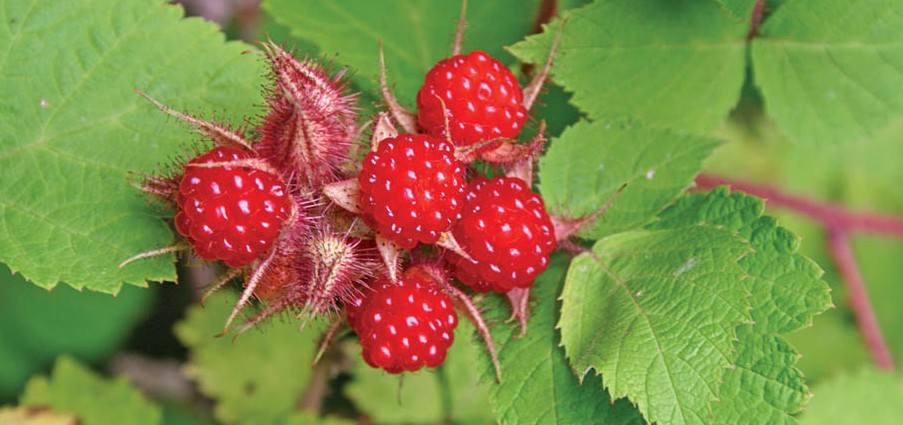Experience-Seeds-Knowledge-Plant Discoveries-Ecological Enrichment-Join Now Click Here!

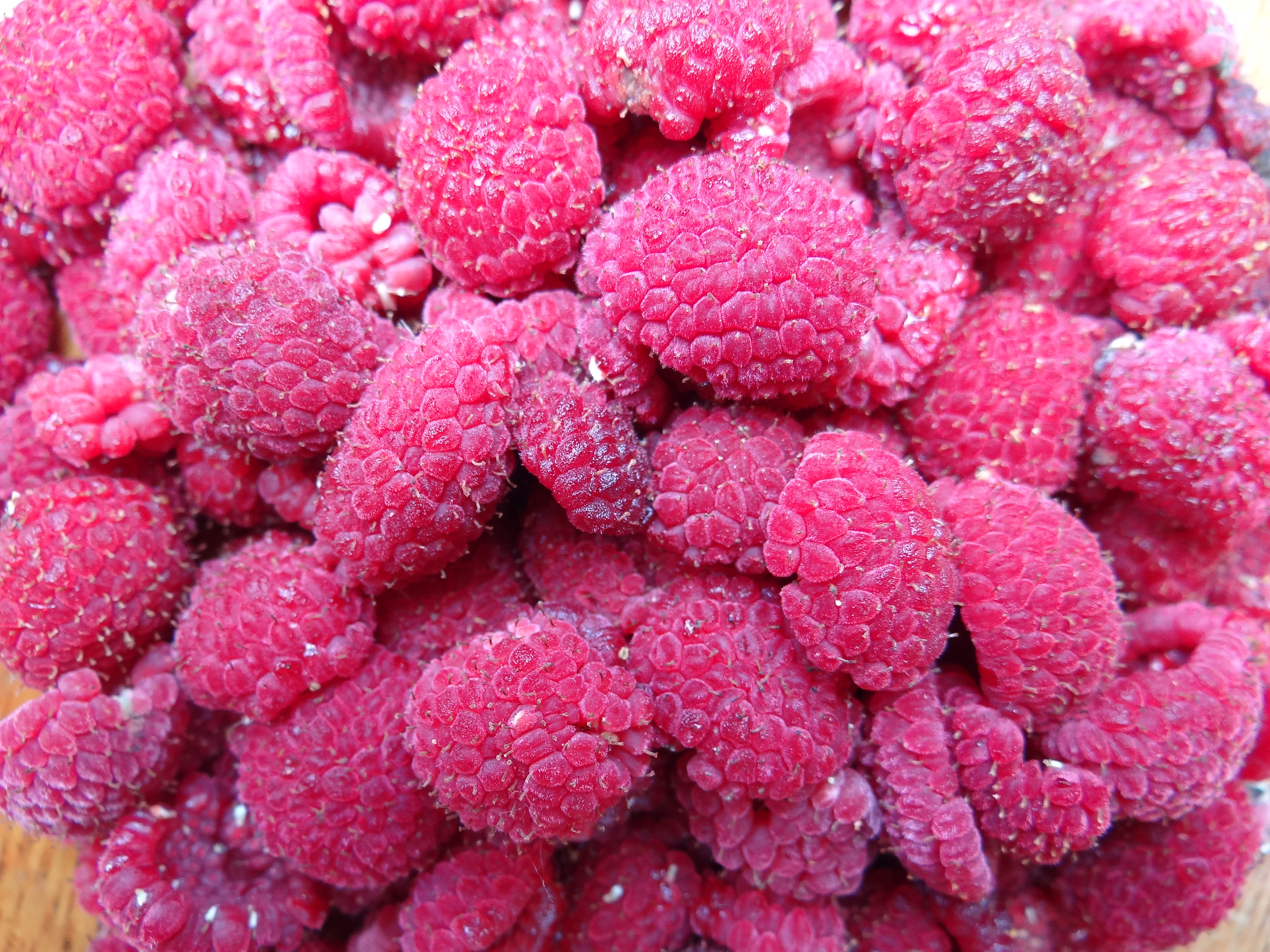
Cultivating a Wild Plant the Thimbleberry Way
The thimbleberry represents one of those fruit plants with a certain mystique around it. Many people throughout the world know this plant in its northern arboreal habitats including many mountainous regions within the United States. It is one of many circumpolar plants found on several continents. Yet, no one cultivates it. Why would you? There are huge areas where they are found wild. I remember hearing about this plant from my brother who with his high school friends took a back packing trip to Isle Royale. This was at a time where they would drop you off at the island and wave good bye. There out of the rock and sand thimbleberry grew surrounded by the pure waters of Lake Superior. There is a small island nearby called ‘Thimbleberry’ where a yellow one was spotted. Between the trout they caught and the thimbleberries, it sounded very magical to me. It wasn’t until I took my family camping on the Keweenaw peninsula of Michigan’s upper peninsula many years later that I first tasted it. I would describe it as an intense raspberry flavor that has been condensed into a concentrate with crunchy small seeds that add a nice texture. I gathered enough to put in pancakes for everyone. It was a hit. I took some home to extract the seed for my nursery. As my daughters knew this was something ‘dad’ did on every vacation.
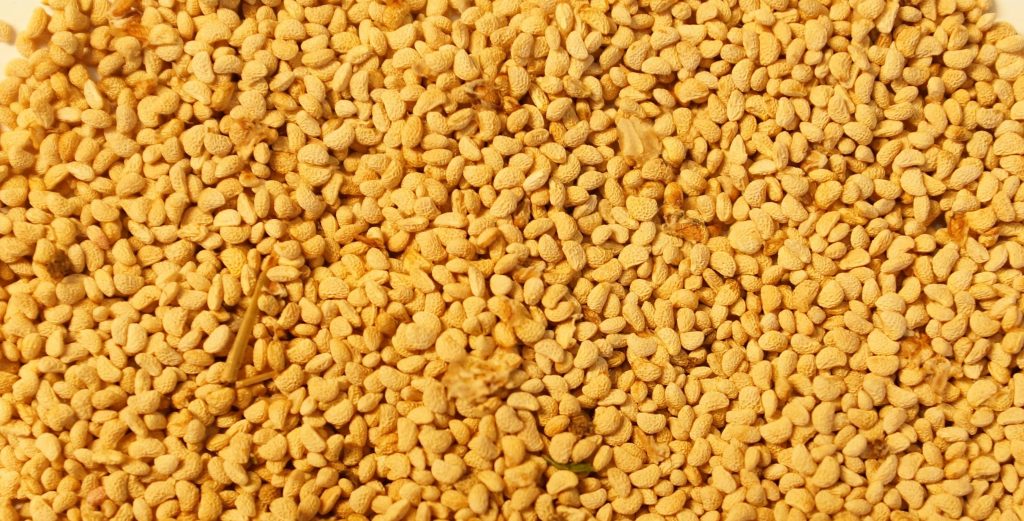
I grew many seedlings of it and soon found it was very easy to flower and grow. However, almost from the beginning it rarely fruited and when it did, there was only a few fruits per plant. Unlike most all the other species raspberries I was growing at the time, this one was extremely low yielding. The plants were lush, flowered nicely yet no fruit was formed.
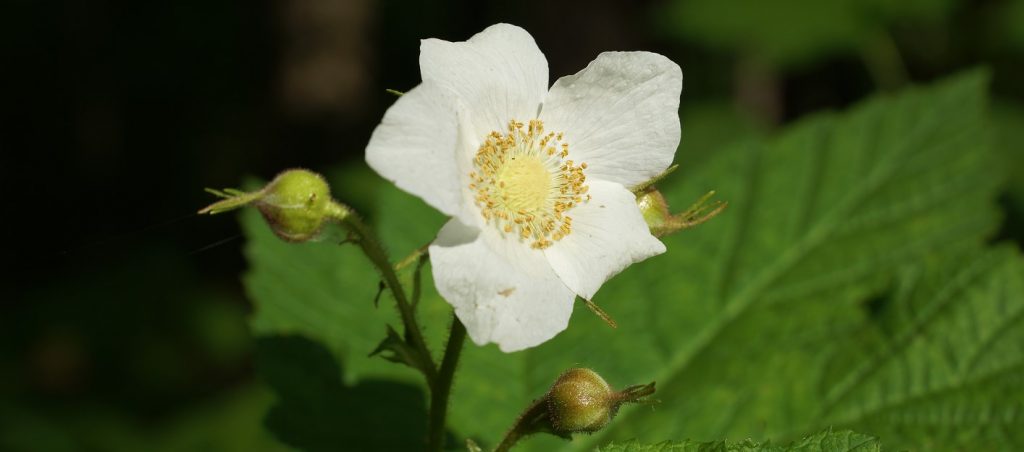
They even spread and grew into large colonies in my backyard in the shade of the black oaks on the edge of the forest. I soon started finding other individuals in lower Michigan that had the same issues. Some had taken out plants from their cottages up north and moved them to their homes in lower Michigan. Again there was no or very few fruits even if they had the best of care and multiple seedling sources. This was not a surprise to me. I had tried to grow other super northern fruits and soon found they were latitude sensitive as well as had certain climate related ecological adaptability issues. Did you think the plants overlooking Lake Superior would grow the same as those overlooking your deck? No. But then again, you have to try. After several attempts at this, I began to rethink my love of thimbleberries and how best to grow them. I did find a northern colony in northern lower Michigan while running on a trail, but did not collect fruit. It was a very small colony and likely the effects would have been the same. There was a massive colony near a boat launch nearby too that looked quite healthy. This one was overlooking Lake Huron.
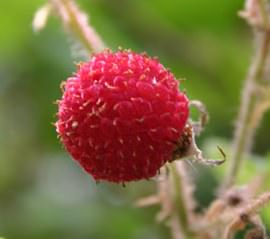
It was at least a decade and soon the thimbleberry fever hit again. It wasn’t the $17.00 dollar a jar jelly that did it though. I realized I needed a wider selection of seed to test. One of these was from a couple of Californians that were very good at wild collecting seed and keeping track of their location and elevations. It appeared they were on the cusp of commercializing marijuana growing at the time. They might live in a mansion now! From their listings, two species were found in the Sierra Nevada mountains at different elevations some of which may exist as swarm hybrids. These are plants which are very similar and naturally cross and create fertile hybrids. These in turn will grow in locations that the other ‘pure’ species may not establish. It is kind of a localized selection done over the course of thousands of years. This area was also noted for its hot summers and longer days much different that Michigan’s upper peninsula. I soon had two colonies produced from these plants under my shellbark hickories at my farm in southwest Michigan. Within five years I had solid colonies of them. This proved successful and now I had fruit of thimbleberries galore. Fruit set. Fish on.
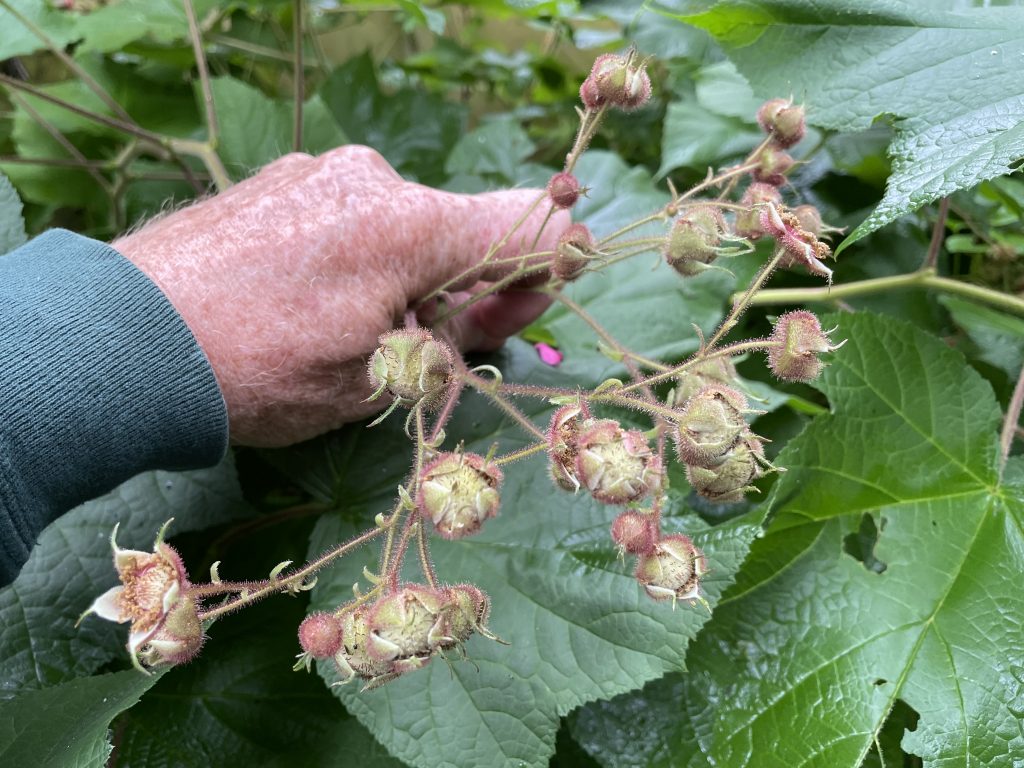
Now what? I began the sale of the plants and seeds. It turned out that Driscolls Berry Company was in on my secret. I was happy to know they did only traditional plant breeding and not GMO. Small amounts of plants and seeds were sold to them to a plant breeder who had 24 patents on strawberries. People around the U.S. bought the bulk of them. I shipped out many hundreds and thousands of plants over the course of a decade or more. Yet, there was this empty feelin and oh what a feelin….still I got that lovin feelin, that really it was just another novelty fruit from Oikos Tree Crops never to see the light of day in any bigger sense. To this day, I marvel at this holy grail of raspberries. One customer told me, “Yeah, too specialized. You will never make any money from it.” He was right. But I was also sitting down to a bowl of delicious thimbleberries. It was a different measure of success.
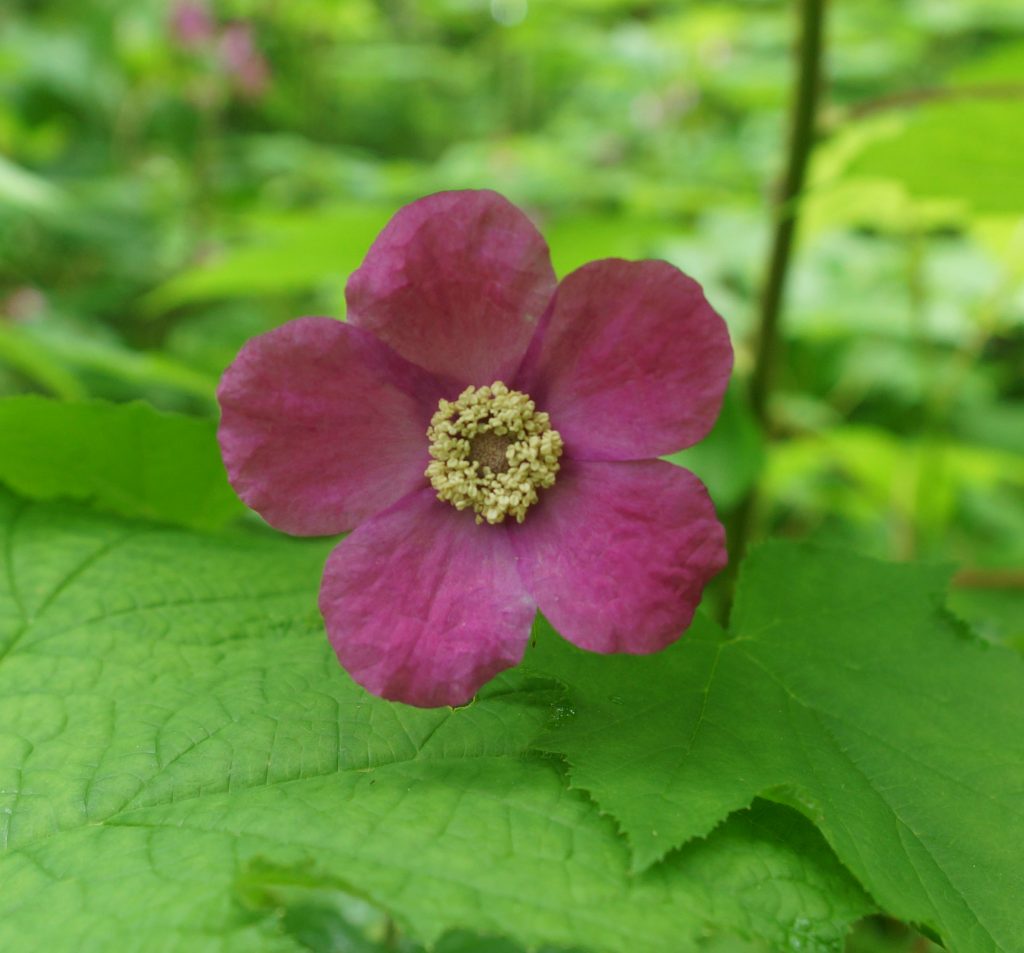
After the hoopla settled down and I made a YouTube video with the help of my daughter Briana. I began to investigate raspberry production as a crop plant. She also did all the delicious creations that you see here.
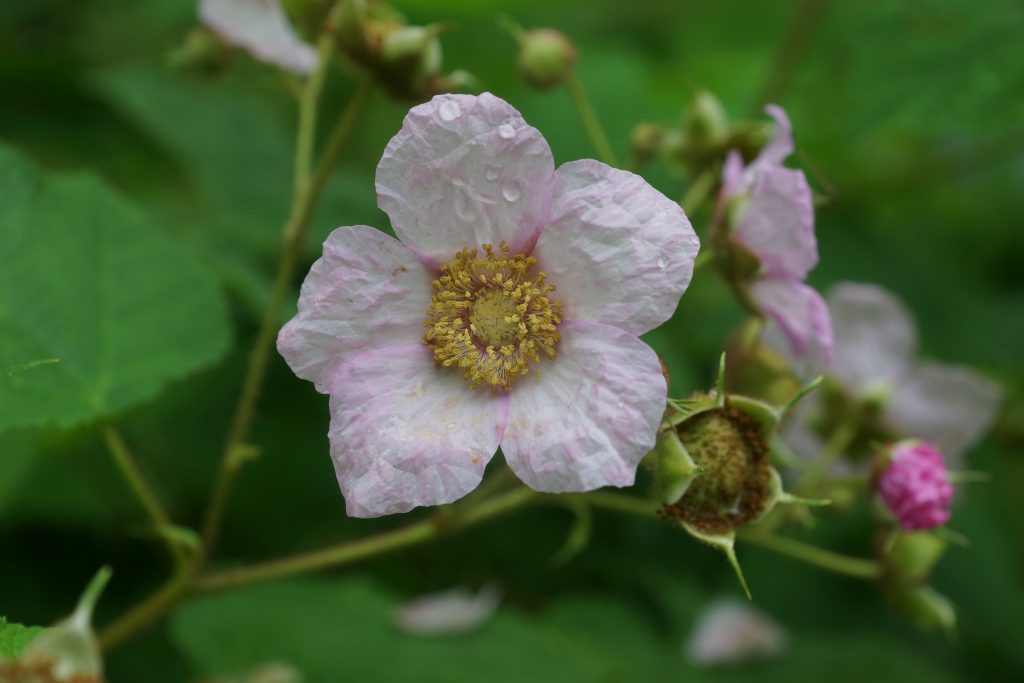
Now what? I began the sale of the plants and seeds. It turned out that Driscolls Berry Company was in on my secret. I was happy to know they did only traditional plant breeding and not GMO. Small amounts of plants and seeds were sold to them to a plant breeder who had 24 patents on strawberries. People around the U.S. bought the bulk of them. I shipped out many hundreds and thousands of plants over the course of a decade or more. Yet, there was this empty feelin and oh what a feelin….still I got that lovin feelin, that really it was just another novelty fruit from Oikos Tree Crops never to see the light of day in any bigger sense. To this day, I marvel at this holy grail of raspberries. One customer told me, “Yeah, too specialized. You will never make any money from it.” He was right. But I was also sitting down to a bowl of delicious thimbleberries. It was a different measure of success.
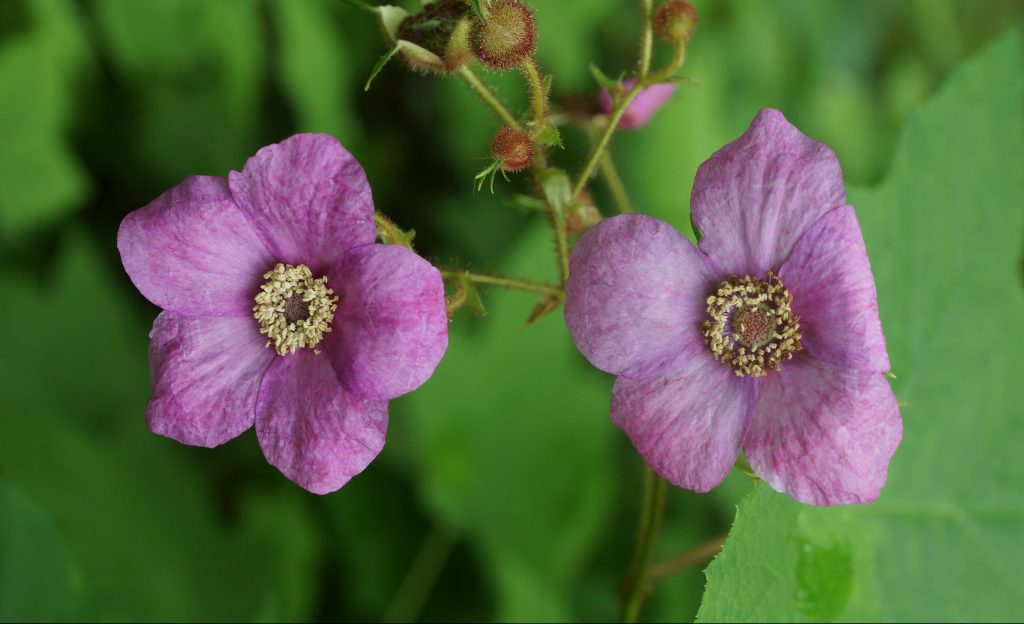
What about thimbleberry yields? This was hard for me to measure. Yields from my seed selections I could safely say would likely top 20 quarts per acre. If managed on a three year rotation of canes, maybe you could top 100 quarts per acre but that is more of an educated guess with a large dash of creamy optimism sprinkled on top. But if that is the case, that would be a miracle of sorts and I would call that a success. If compared to other raspberries, it would be a huge flop. The plants are stoloniferous and spread fast soon taking up large areas. This has an advantage in that the canes start bearing at 2 years and continue for 2-3 years and then die out. So no need to replant. You could say this is certainly usable for landscapes. As far as cost effective or the new macadamia nut level of success, no one knows. Mention it to anyone in any agricultural endeavor, and you might as well be talking about time travel using a toaster.
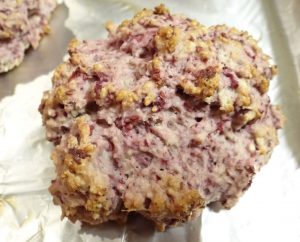 Cultivars: “Well that might be your problem. It’s not what you want, it’s what your customers want.” from the movie, Joe Dirt.
Cultivars: “Well that might be your problem. It’s not what you want, it’s what your customers want.” from the movie, Joe Dirt.
Once a customer told me about a popular variety of fruit, “It isn’t any better than the others, it is named only to honor the originator. It makes you wonder why they named it anyway.” Answer: Ego and a form of horticultural immortality. Besides money, very popular these days. Usually a named variety or cultivar is considered better than anything else even if it is not. A seedling is viewed as inferior in the horticultural world. Having a named variety is what customers want too which reinforces that belief system to some extent. Thank you Joe Dirt. Yet all of the seedlings I grew were essentially very good yielding plants with no apparent difference. They were identical like a cultivar in this respect. That is not bad though. You can harness that as a population without loss using the whole population as is without improvement from the wild plants. Just the cultivation is enough to help make this a reality improving the yields due to the cultivation of the plants by a person. Yes. A little love goes a long ways.
Thimbleberry is diverse. In Shrubs of Michigan, Cecil Billington writes “is extremely variable. This has led to a great deal of ‘splitting,’ and there are are something like three dozen varieties and forms now described and published.”
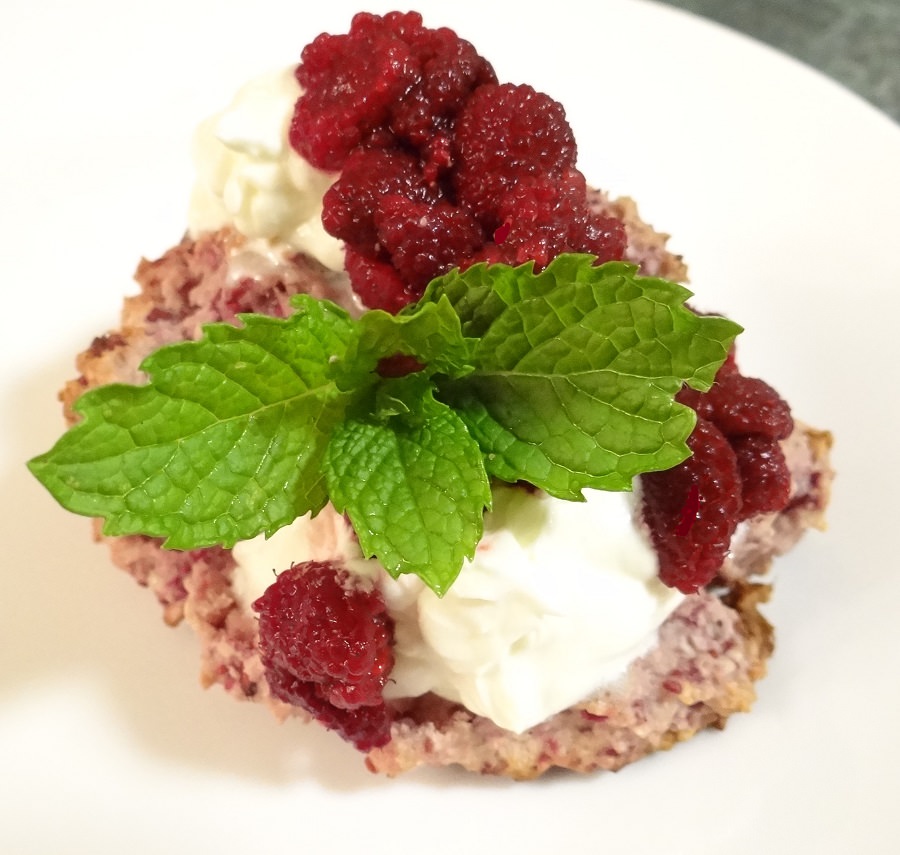
Raspberries are essentially meant to be short lived. They are such powerful pioneer species and highly effective at growing quickly at places where few plants can grow or establish. Even the ones people dislike as invasive are wonderful plants feeding birds and people alike. Like the Himalayan blackberry, what are you going to do, herbicide the world? Tell people and the birds to stop enjoying and benefiting from them? Once on the way home from Washington D.C. visit, I stopped at a rest area where people were picking wineberries. How could anyone enjoy this horrible invasive plant labeled by invasion biologists? Easy. It tastes delicious and makes the clearest most beautiful jelly and a fine wine. People are using a valuable resource the same as the birds. People have the power. Ecological integration is biological enrichment.

Every now and then I think of my grandmother and her love of red raspberries. She had a long of row of them planted in her garden right next to the giant sunflowers. The rich dark red jam was amazing in flavor. That I remember! Sometimes while picking raspberries at my farm, I hear her loud and clear German voice, “Kenny, would you like some RASSPPberries? You need some rasspberries Kenny!” I sometimes repeat this over and over very loud when I am picking. “Rassppberries, KENNY?” just to see if I can get an echo. You can’t say no.
